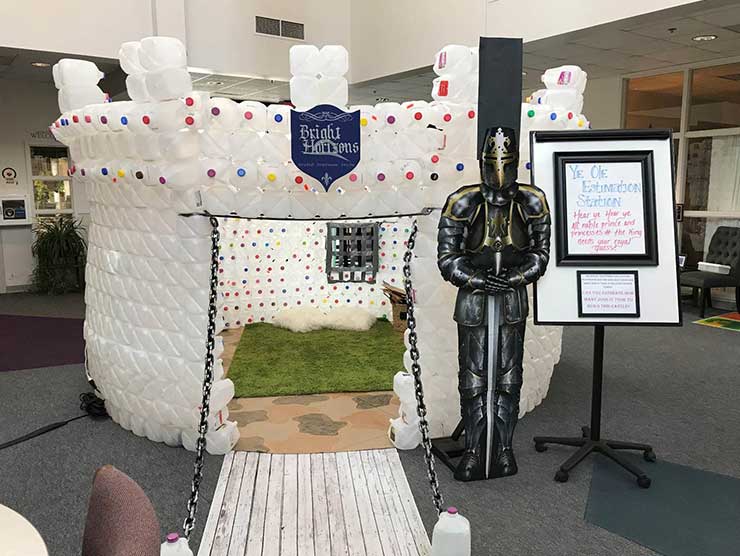Now more than ever, many families are feeling the stress of a strained economy. Every penny counts, and it’s important that the whole family has an understanding of the value of money. While children under five won’t be able to comprehend more advanced money concepts, there are ways to start small and introduce financial literacy for kids at a young age.
Meaning of Financial Literacy
‘Financial literacy’ sounds complicated – so what does it really mean? At the core, financial literacy is a set of skills that allows people to make smart decisions about their money. Being financially literate means you have an understanding of making, saving, spending (including donating), and investing money. For little ones, starting with the basics of money management might mean helping them learn how to earn money and make small decisions with how to manage it.Importance of Financial Literacy for Kids
Teaching kids about money early on instills good financial habits that will follow them into adulthood. It’s important to have these types of conversations and allow children to ask questions, so that eventually they can begin to contribute to their own financial success.Financial Literacy Activities for Kids
One key to raising finance-wise kids is experience, and they can gain experience through educational activities. Here are some activities to help your children learn about money in fun, engaging, and age appropriate ways.
- For children as young as 4 or 5, teach them the numerical value of coins (example: a nickel equals 5 and a quarter is 25). Have them hold the coins, and observe the different sizes, colors, and weights. From there, have kids engage in an activity that allows them to combine currencies to reach specific amounts (5 nickels make 1 quarter).
- Ask your local bank for coin wrappers and have your child roll the family’s loose change. This is a great way to practice counting and learning how many “X” make a dollar. As a reward for helping, your child can take a percentage of the total.
- Engage in dramatic play. Set up a pretend farmer’s market or pizza shop and have children practice purchasing items and working different jobs.
- Assign values to items and test it through play. Price a variety of things throughout your house and ask children to pay for each one in different ways (using only quarters or only dimes, for example).
- Teach children about “needs” vs. “wants.” Have your child create a list of things they need and a list of things they want. Younger children may enjoy cutting pictures from magazines to craft their lists. Make a game of it! Then, use practical examples to discuss the difference between the two concepts. Make lists of those very basic things they must have to survive (food, water, shelter, and clothing) versus those things they want to have (toys, candy, or video games).
- Read age appropriate books. Here are some to get you started:
- "Coat of Many Colors" by Dolly Parton (Preschool – Gr. 2)
- "Bunny Money" by Rosemary Wells (Ages 3-5)
- "The Money We’ll Save" by Brock Cole (Ages 4-8)
- "A Dollar for Penny" by Julie Glass (Ages 4-6)
- "Lemonade in Winter" by Emily Jenkins (Preschool – Gr. 2)
- "Arthur’s Funny Money" by Lillian Hoban (Gr. 1-3)
- "A Chair for My Mother" by Vera B. Williams (Ages 4-8)
- "How Much Is That Doggie in the Window?" by Iza Trapani (Ages 2-5)
- "Aida’s Violin" by Susan Hood (Gr. 2-5)
- "Corduroy" by Don Freeman (Ages 1-3)
- "Caps for Sale and the Mindful Monkeys" by Esphyr Slobodkina (Preschool – Gr. 1)
Kids’ Money Making Ideas
Whether or not you’re a believer in giving kids money for doing household chores, there are plenty of other ways that children can earn an income for themselves.
- Have children help with jobs that you or a neighbor might pay someone else to do, like feeding/walking pets, pulling weeds, or watering plants.
- Encourage family and friends to give your children money instead of toys for birthdays and milestones. They can keep this money in a physical piggy bank or passport savings account.
- Open a lemonade stand. This is a great way to teach kids about creating a budget (to get supplies), supply and demand, work ethic (sticking with the stand when there are no customers in sight) and goal setting (how will the money earned be used)?
- Organize a yard sale. Go through old toys with your children and decide what you might be able to sell.
Giving Back
Just as it’s essential to teach children about the value of earning and managing money, it’s also important to discuss ways that your children can give back to others. Donating a portion of lemonade stand sales or yard sale proceeds to a special cause gives children a feeling of purpose, community, and autonomy – and instills an attitude of gratitude as they continue to grow.“My two sons (currently ages 5 & 6, but they’ve done this for a couple of years) save up to adopt an animal through World Wildlife Fund, though lots of other environmental groups, zoos, and farms do the same thing. Getting to pick out their favorite animal to adopt makes the act of giving fun for them, which I think is key for young kids.” – Shannon, Director of College Finance, Bright Horizons College Coach





